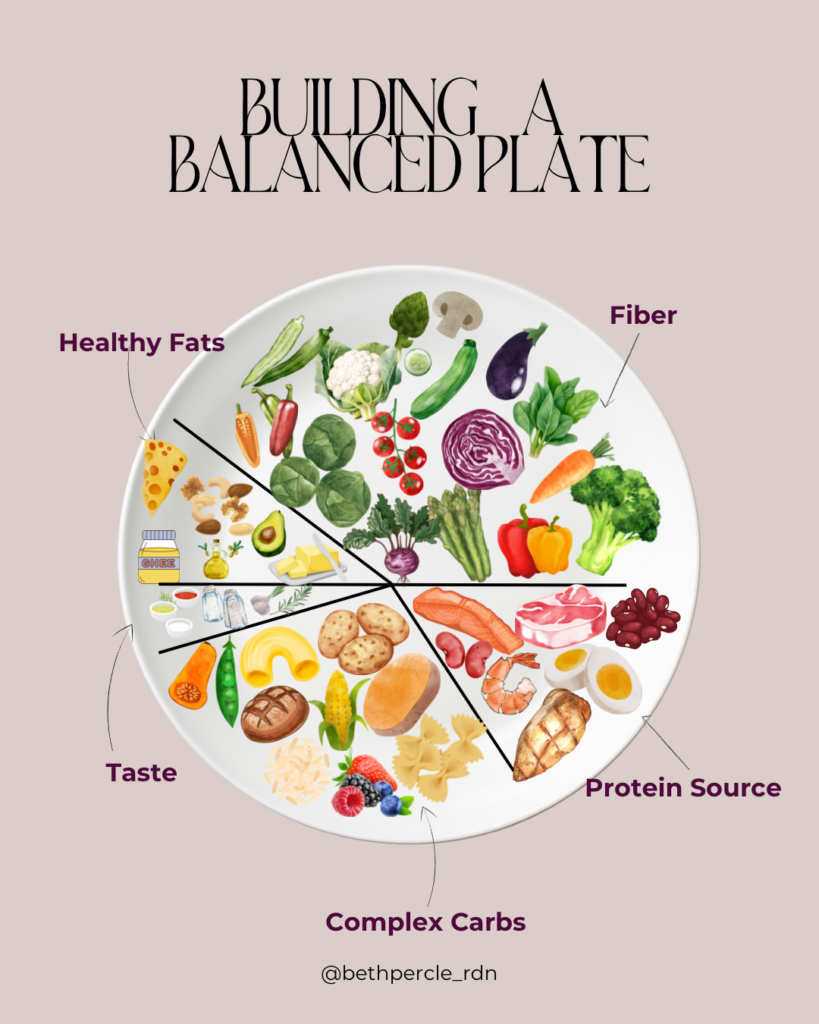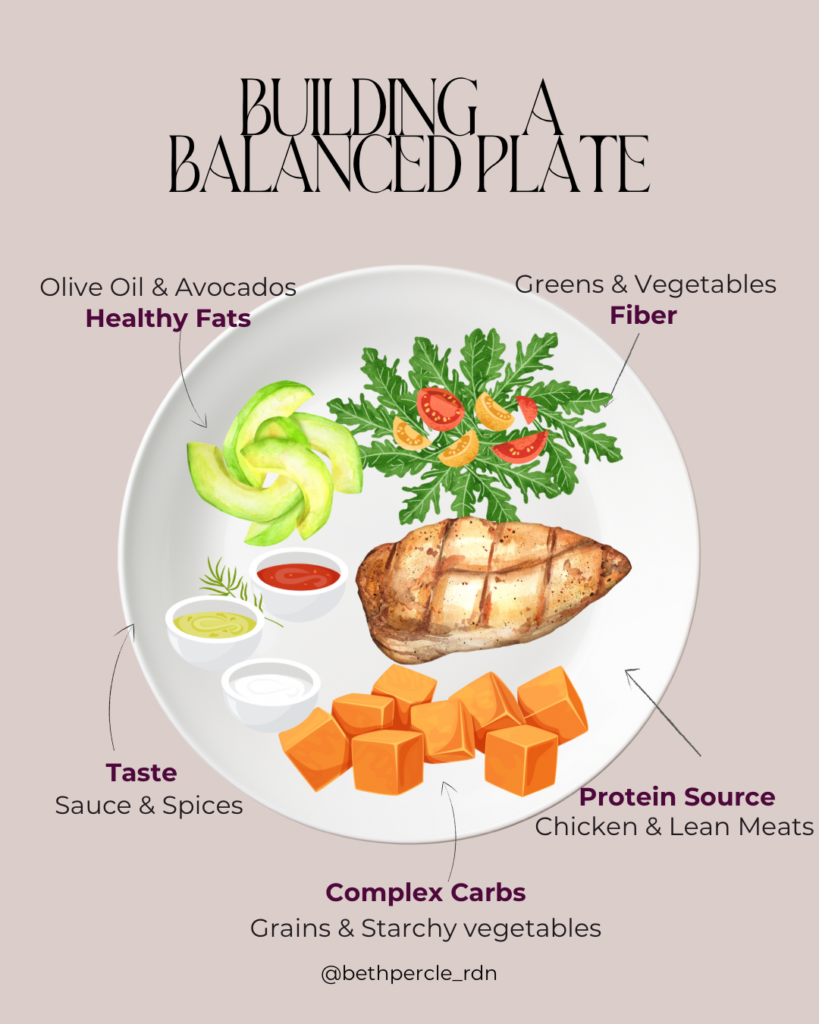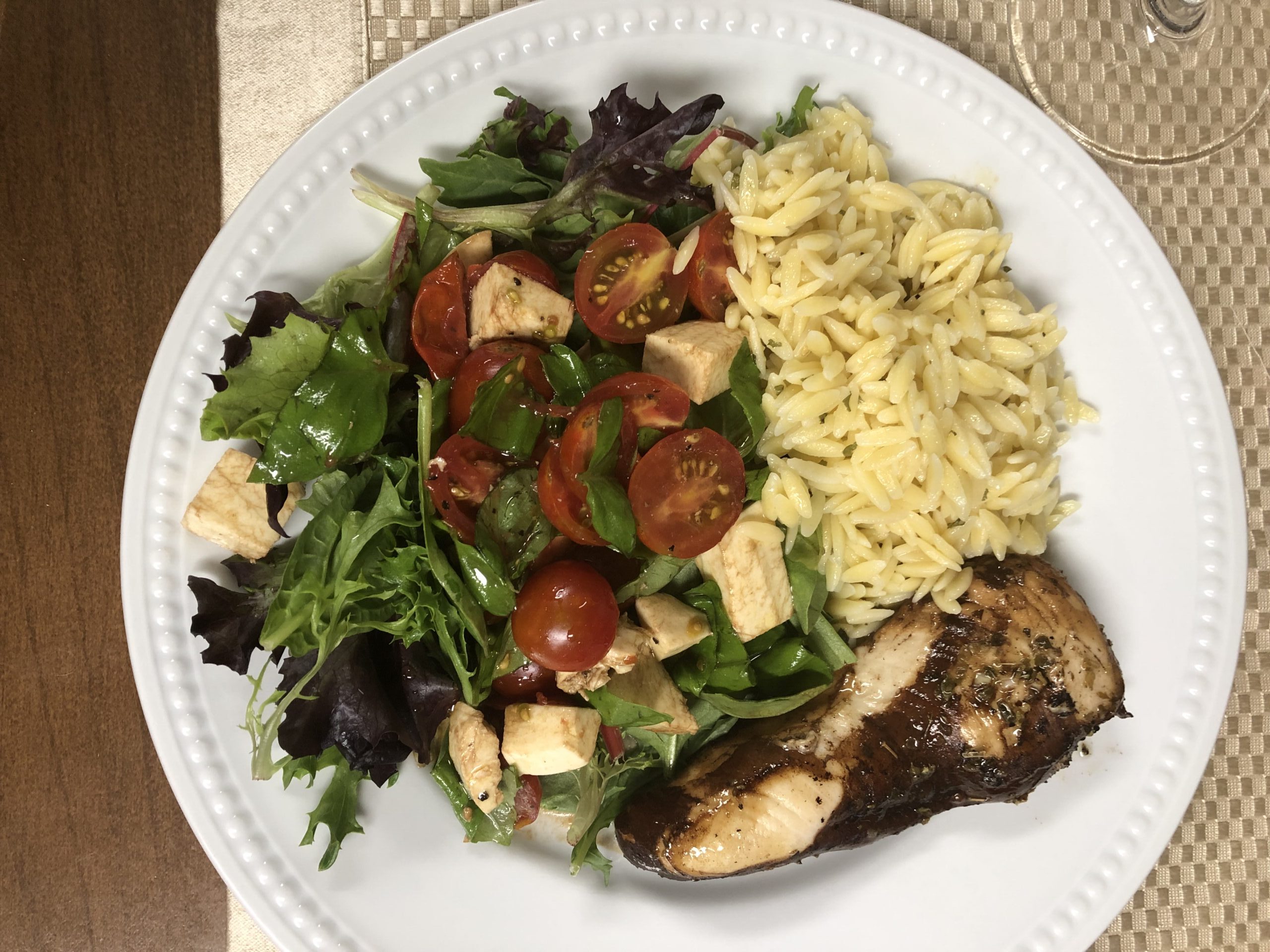One of the first topics I discuss with my clients is how to build a balanced plate. Why? Because it’s a sustainable approach to nutrition that encourages adding to your meals rather than restricting them. This mindset shift allows you to create satisfying, nutrient-dense meals without feeling deprived.
When starting a health journey, I always recommend focusing on balanced plating before diving into counting macros or tracking intake. By incorporating fiber-rich veggies, filling carbohydrates, healthy fats, satisfying protein, and flavor-packed seasonings or spices at each meal, you’ll:
- Have more energy
- Feel more satisfied
- Develop a better relationship with food
Below, you’ll find graphics to help guide you in plating your meals. If this approach resonates with you or you’d like more personalized support, feel free to schedule a one-on-one consultation. Check to see if your insurance covers your visits: Schedule here

How To Build A Balanced Plate
- Start with Filling Carbohydrates
- Carbs are the body’s preferred fuel source, yet diet culture often demonizes them. If you’re frequently fatigued or experiencing intense cravings for sweets, it might be time to reassess your plate. Are you including enough carbohydrates?
- Try adding options like roasted sweet potatoes, baked potatoes, rice, orzo, pasta, squash, corn, peas, bread, or fresh fruits. Any of these sound appealing to you?
- Add a Healthy Protein
- While carbohydrates provide some protein, incorporating a dedicated protein source helps keep you satisfied longer.
- Consider options such as chicken, beef, pork, fish, shrimp, eggs, lentils, beans, tofu, or cottage cheese.
- Load Up on Vegetables
- Vegetables add fiber, flavor, color, and texture to your meal. There are so many delicious ways to enjoy them—try roasting, steaming, eating them raw, or sautéing.
- Top with Healthy Fats
- Healthy fats not only enhance flavor but also aid in the absorption of fat-soluble vitamins (A, D, E, and K).
- Great options include nuts, seeds, avocado, olive and avocado oils, butter, ghee, olives, and fatty fish like salmon or tuna.
- Finish with Flavor
- Fresh herbs and spices bring your plate to life with added flavor, variety, and color.
- Try seasoning with rosemary, thyme, oregano, basil, paprika, chives, garlic, onions, sage, cracked black pepper, or flaky sea salt.
A Realistic Balanced Plate
To help you visualize this approach, I’ve included a graphic below with meal-plating options.

I hope this guide helps you create meals that are both nourishing and satisfying!
Warmly,
Beth S. Percle, MS, RD, LDN

you said: